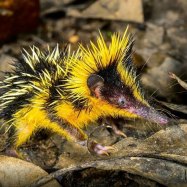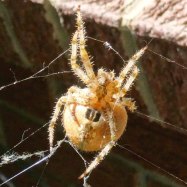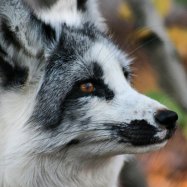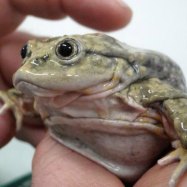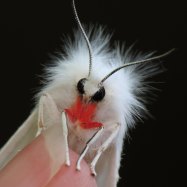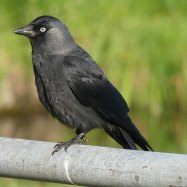
Bull Terrier
20-24 inches
The Bull Terrier is a lovable and energetic dog, known for its muscular body and unique triangular-shaped head. They are part of the Canidae family and can reach a length of 20-24 inches. These social animals thrive in urban and suburban areas, making them perfect for families looking for a loyal and playful companion.
Animal Details Summary:
Common Name: Bull Terrier
Kingdom: Animalia
Habitat: Terrestrial
The Unbreakable Bond with the Bull Terrier: An Unstoppable Force of Loyalty and Love
In a world where there are countless breeds of dogs, one stands out for its unique and captivating appearance – the Bull Terrier. Popularly referred to as the "gladiators of the canine world," Bull Terriers are known for their strong and muscular build, distinctive egg-shaped head, and unwavering loyalty to their owners.But beyond their physical appearance, there is so much more to this breed that makes them stand out and captures the hearts of many dog lovers. In this article, we will explore everything you need to know about the Bull Terrier – from their history and characteristics to their behavior and what makes them a beloved companion Bull Terrier.
History and Origin
The Bull Terrier has a rich history that dates back to the early 19th century in England. This breed was developed by James Hinks, a British dog breeder, who crossbred the Bulldog with various Terrier breeds, including the White English Terrier and the now extinct English White Terrier.
Initially, the Bull Terrier was bred for fighting and bull-baiting, a popular sport back in the day. However, as these violent activities were eventually banned, the breed evolved into a show dog and companion, thanks to their endearing qualities and loyalty.
Physical Characteristics
The Bull Terrier is a medium-sized dog, with a height of 20-24 inches and a weight of 50-70 pounds. Their muscular build and athletic physique give them a powerful and sturdy appearance, making them perfect for their initial purpose of fighting.
Their most distinctive feature is their egg-shaped head, known as the "Roman nose." This unique head shape is a result of the crossbreeding between the Bulldog and Terrier breeds and is a defining characteristic of the Bull Terrier.
As for their coat, Bull Terriers come in three variations – white, brindle, or colored Bulldog Mix. The white variety is the most popular and is recognized by most kennel clubs, while the other two are considered uncommon. They have short and smooth coats that are easy to maintain, making grooming a breeze.
Temperament and Behavior
Despite their history of being fighting dogs, the Bull Terrier is not a naturally aggressive breed. They are known for their loving, playful, and energetic personalities, making them great family pets. They are highly affectionate towards their owners and will go to great lengths to please them.
However, it is essential to note that Bull Terriers require proper socialization and training from an early age. Without proper guidance, their strong-willed nature and determination can lead to behavioral issues. But with early training and socialization, they can make excellent companions for adults, children, and other pets.
Geographical Distribution and Habitat
The Bull Terrier is a worldwide breed, with a significant population in countries like the United States, the United Kingdom, Australia, and Japan. They are highly adaptable and can thrive in both rural and urban settings. However, their ideal living environment is in an urban or suburban area with plenty of room for exercise and playtime.
This breed is known for its high energy levels and requires daily exercise to keep them physically and mentally stimulated. Daily walks, play sessions, and training sessions are crucial for a Bull Terrier's well-being.
Nutrition and Feeding
As with all dog breeds, a well-balanced and nutritious diet is essential for the overall health and well-being of the Bull Terrier. Being a carnivorous animal, they require a high-quality diet rich in protein, including meat, fish, and poultry.
The amount of food a Bull Terrier needs will depend on their age, size, and activity levels. It is crucial to consult with a veterinarian to determine the right amount and type of food for your pet. It's also advisable to split their meals into two smaller portions to prevent bloat, a potential health issue for this breed.
Training and Exercise
Bull Terriers are highly intelligent and trainable, although they can display some stubbornness at times. Their determination and strong-willed nature require a firm, consistent, and positive training approach. Positive reinforcement techniques such as treats, praises, and playtime work best for this breed.
Apart from training, Bull Terriers require daily exercise to keep them mentally and physically stimulated. As mentioned earlier, a lack of exercise can lead to behavioral problems, so it's essential to provide them with plenty of physical activities.
Health Concerns
Generally speaking, Bull Terriers are a healthy breed with a lifespan of 12-14 years. However, like all breeds, they are prone to certain health issues that owners need to be aware of. Some of these health concerns include deafness, heart conditions, kidney disease, and skin allergies. Regular visits to the vet and proper care and nutrition can help prevent or manage these health issues effectively.
In Conclusion
The Bull Terrier is undoubtedly a unique and captivating breed that has won the hearts of many dog lovers over the years. From their rich history to their distinctive egg-shaped head, the Bull Terrier is a breed that will stand out in any crowd. Their loyal, affectionate, and playful personalities make them perfect companions for individuals and families looking for an energetic and loving pet. With proper care, training, and exercise, the Bull Terrier is an unstoppable force of loyalty and love. So, if you're considering adding a Bull Terrier to your family, be prepared for a lifetime of love, companionship, and endless cuddles from this remarkable breed.
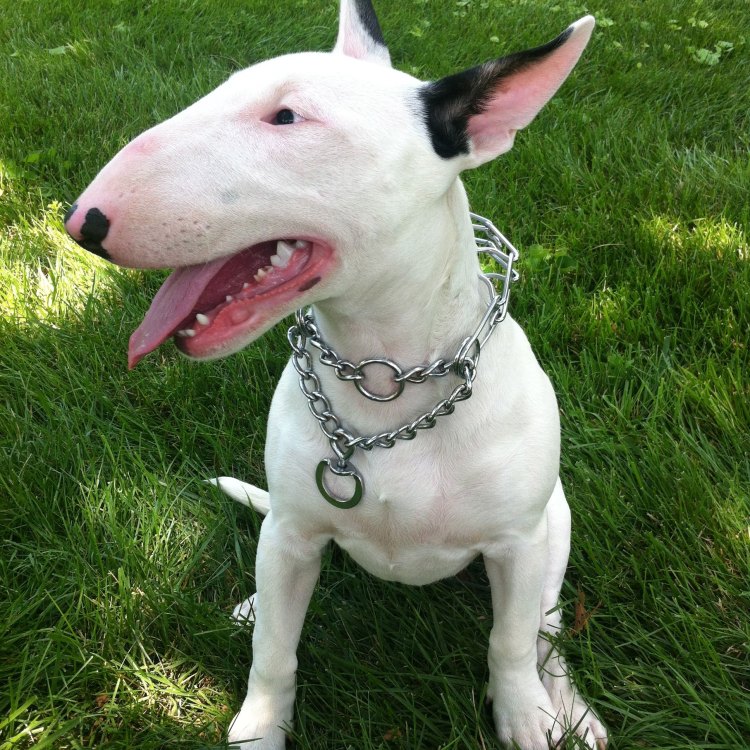
Bull Terrier
Animal Details Bull Terrier - Scientific Name: Canis lupus familiaris
- Category: Animals B
- Scientific Name: Canis lupus familiaris
- Common Name: Bull Terrier
- Kingdom: Animalia
- Phylum: Chordata
- Class: Mammalia
- Order: Carnivora
- Family: Canidae
- Habitat: Terrestrial
- Feeding Method: Carnivorous
- Geographical Distribution: Worldwide
- Country of Origin: England
- Location: Urban and suburban areas
- Animal Coloration: White, brindle, or colored
- Body Shape: Medium-sized and muscular
- Length: 20-24 inches

Bull Terrier
- Adult Size: Medium
- Average Lifespan: 10-12 years
- Reproduction: Sexual
- Reproductive Behavior: Mating
- Sound or Call: Barks
- Migration Pattern: Non-migratory
- Social Groups: Can live as single pets or in small groups
- Behavior: Energetic, playful, and bold
- Threats: None (domesticated)
- Conservation Status: Not applicable
- Impact on Ecosystem: None (domesticated)
- Human Use: Companion dog, show dog
- Distinctive Features: Egg-shaped head, muscular build
- Interesting Facts: Bull Terriers are often referred to as 'gladiators in suits' because of their muscular physique and powerful appearance.
- Predator: None (domesticated)
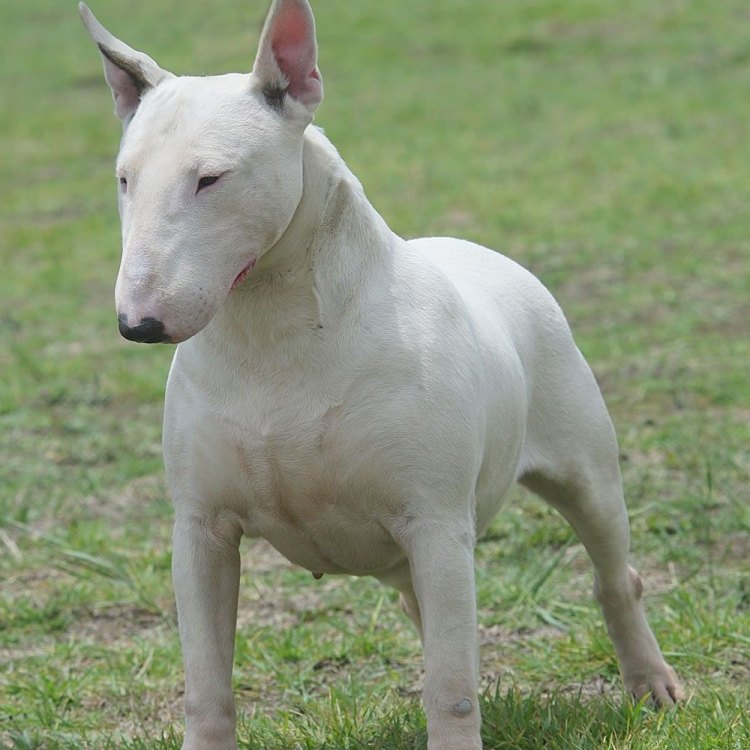
Canis lupus familiaris
The Fascinating World of Bull Terriers: Known as the Gladiators in Suits
When you picture a dog, what comes to mind? Perhaps a fluffy and friendly golden retriever, or a small and spunky Chihuahua. But have you ever heard of a dog breed being referred to as a gladiator in a suit? Meet the Bull Terrier – a breed that is neither as common nor as well-known as its canine counterparts, but is equally fascinating and unique in its own right.The Bull Terrier is a medium-sized dog with an average lifespan of 10-12 years. They are known for their striking appearance and distinctive features, such as their egg-shaped head and muscular build PeaceOfAnimals.Com. But beyond their physical characteristics, there is much more to this breed that makes them stand out from the crowd.
The Early Days of Bull Terriers
The Bull Terrier originated in England in the 1800s, developed from the crossing of the Old English Bulldog and various terrier breeds. They were originally bred for the sport of bull-baiting, where they would fight against bulls in a cruel and inhumane manner. However, this bloodsport was banned in England in the 1830s, and the Bull Terrier’s purpose shifted to that of a companion and protector.Despite its violent history, the Bull Terrier has evolved over time into a lovable and friendly breed. They have found their place as a beloved pet in many households, and their unique characteristics make them stand out in the dog world.
The Alluring Appearance of a Bull Terrier
One cannot talk about Bull Terriers without mentioning their distinctive and eye-catching appearance. Their muscular and athletic build makes them stand out among other breeds, and their short, shiny coat comes in a variety of colors such as white, black, brindle, and more.But the most striking feature of a Bull Terrier is their egg-shaped head Black Tailed Rattlesnake. This feature is a result of intentional breeding, as early breeders aimed to create a breed that was unlike any other. The shape of their head is known as the ‘Bully Head’ and is one of the defining characteristics of the breed.
Their head may be egg-shaped, but their personality is anything but. These dogs are known for their energetic and playful nature, making them perfect for families with children. They are also bold, fearless, and full of confidence, which makes them great guard dogs as well.
Bull Terriers in the Social Setting
While some breeds of dogs may thrive in packs, Bull Terriers have a more independent nature and do not typically form large social groups. They are content living as single pets or in small groups with other compatible dogs.Their social behavior also extends to their relationship with humans. Bull Terriers are known for their loyalty and devotion to their owners, making them great companion dogs. They love attention and crave human interaction, which is why they make such good family pets.
The Reproductive Behavior of Bull Terriers
Bull Terriers are sexually reproductive animals and engage in mating behavior when it is time for them to breed. Female Bull Terriers come into heat twice a year, while males are always ready to mate. However, responsible breeders take great care when breeding these dogs, as they are prone to certain health issues that can be passed down to their offspring.These dogs may have a tough and intimidating exterior, but when it comes to reproduction and the care of their young, they display a gentle and nurturing side that is often overlooked.
The Sound of a Bull Terrier
Most dog owners are familiar with the different sounds their pets make, whether it be a bark, howl, or whine. Bull Terriers are no different, and their sound or call is a bark. However, these dogs are not excessive barkers and are not known to be noisy pets. They do not bark unnecessarily, but they will make their voices heard when necessary.Survivors of Time: Bull Terriers Today
While Bull Terriers were once used for bloodsports and gambling, they have come a long way from their dark past. Today, they are domesticated and are primarily used as companion dogs and show dogs. They are also utilized as therapy dogs due to their affectionate nature and ability to form strong bonds with humans.However, even though they have been domesticated and are no longer used for their original purpose, they are still known as ‘gladiators in suits.’ This nickname holds true, as these dogs have a strong and resilient spirit that has helped them survive through time and adapt to the changing times.
Impact on the Ecosystem
The Bull Terrier may have had a negative impact on the ecosystem in the past when they were used for bull-baiting. However, as domesticated pets, they do not have a significant impact on the environment. They do not have any natural predators, and being non-migratory, they do not disrupt any ecosystems.Bull Terriers and Human Use
Humans have had a long history of using animals for various purposes, such as for food, transportation, or work. But when it comes to Bull Terriers, their primary use is as companion dogs and show dogs. With their loyal and affectionate nature and distinctive appearance, they have become popular pets in many homes.In addition to being great companions, they have also been used as show dogs, participating in various dog shows and competitions. Their muscular build and unique features make them stand out in the ring, and they have earned numerous titles and awards over time.
Interesting Facts about Bull Terriers
As with any breed, there are always interesting and fun facts to learn about Bull Terriers. Here are a few that make these dogs even more unique:- Bull Terriers have a relatively long lifespan for a medium-sized dog, with an average of 10-12 years.
- They were once used as a symbol of England during World War II and were featured on propaganda posters.
- Famous historical figures such as Winston Churchill and General George S. Patton owned Bull Terriers.
- The Budweiser dog, Spuds McKenzie, was a Bull Terrier.
- Bull Terriers have a high pain tolerance and are known to continue playing even when injured.
Final Thoughts
Dogs are known as man’s best friend, and Bull Terriers are no exception. They have come a long way from their bloody past to become loving and loyal companions. Their distinctive appearance and unique personality make them stand out in the canine world, earning them the nickname ‘gladiators in suits.’ These dogs may not have a significant impact on the ecosystem, but they have made their mark in the hearts of their owners and all those who have the pleasure of meeting them.
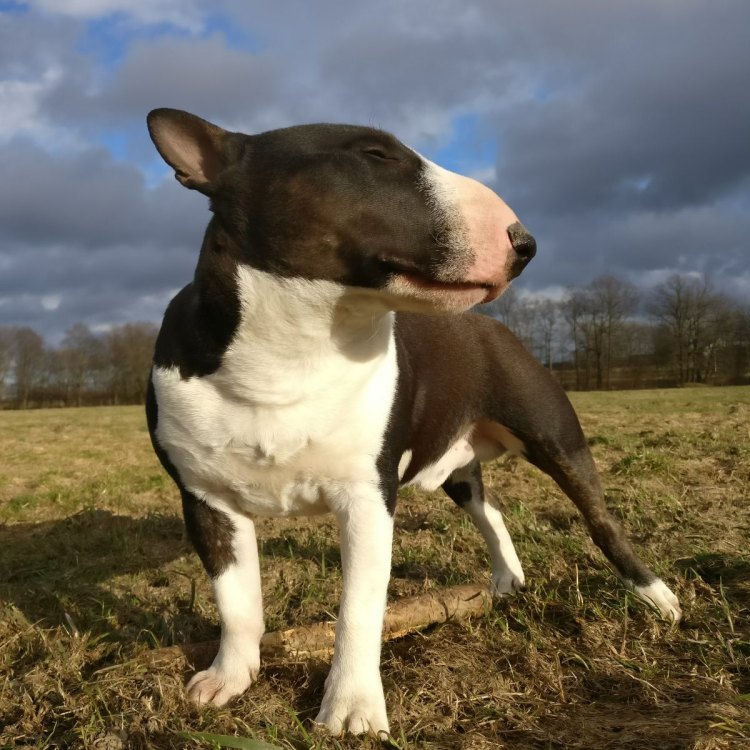
The Unbreakable Bond with the Bull Terrier: An Unstoppable Force of Loyalty and Love
Disclaimer: The content provided is for informational purposes only. We cannot guarantee the accuracy of the information on this page 100%. All information provided here may change without prior notice.

